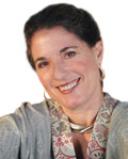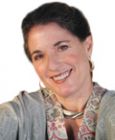
Relationships
How a Movement Choir Heals
Most people know about the benefits of singing, both solo and with others.
Posted August 29, 2014
Most people know about the benefits of singing, both solo and with others. Studies show that singing can bring enhanced immune function, uplifted mood, and singing with others can enhance relationships, sense of harmony, and being part of something bigger than oneself.
Similarly, movement can bring enhanced immune function, improved mood, and moving with others can also bring a sense of being part of something bigger than oneself.
I know about that from my early years as a folk dancer. As I traveled through the Middle East, Scandinavia and the US, I discovered how pounding the earth in shared rhythm, organizing a chaotic group into circles and lines, with group members nonverbally listening to and responding to each other, built healthy individuals and healthy communities.
This experience profoundly influenced my decision to study for a masters in dance therapy. There I learned more about the ethnographic/psychological/kinesiological traditions behind community dance rituals. Seeing dance therapy groups in a psychiatric hospital through the lens of creative and archetypal ritual helped me understand even more the power of dance to heal.
In 1996 I had the privilege of being part of the first movement choir brought to the US by my teacher, Irmgard Bartenieff. She was the student of Rudolf von Laban, whom some call the “grandfather of modern dance.” Von Laban saw movement in three-dimensional dynamic forms, and developed a language based on qualities (time, weight, space and flow) and dimensions (vertical, horizontal, etc.). He created pageants where tens of thousands of people moved in shard rhythm, structures and repetitive movements called Movement Choirs.
When I worked in psychiatric hospitals, often the morning community meeting on a Monday was very low energy. When we asked participants to stand and do simple stretches and warm ups in a circle, even for a just a few minutes, the conversation after that was lively.
Think of ways you can bring in simple movements for some of these applications:
1) Taking a break between long periods of sitting. Stretch. Take a brisk walk. Even better with others.
2) Opening ceremony: for conferences and other related events, having an opening ritual where people connect with each other, energize and motivate themselves to move forward, is very helpful.
3) Ending Ceremony. After events people are often over-stimulated or over-saturated. Doing a closing ritual together helps participants process their experiences and not carry them with them in their bodies or minds.
On August 7, I was able to introduce the Movement Choir at the 122nd annual convention of the American Psychological Association. To the sounds of the APA Council Chorus, our Dance Caucus, led by Jody Wager (President-Elect of the American Dance Therapy Association), Dr. Phyllis Koch-Sheras and I led the group in a simple Movement Choir. It seemed to energize the participants and help them participate in the rest of the convention with enthusiasm and a collaborative spirit.
Below is a link to a 3 minute video of that Movement Choir:

